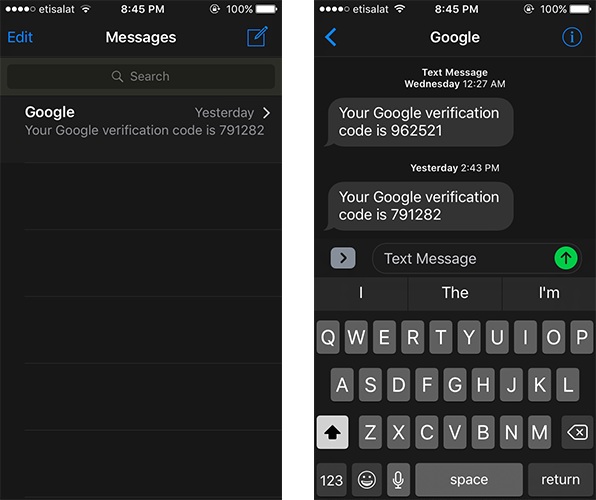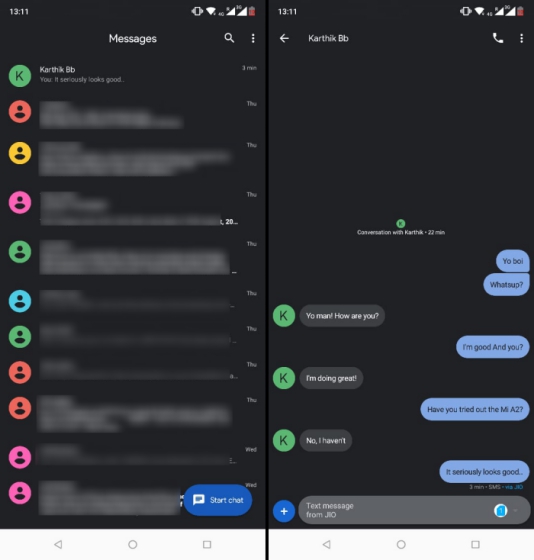Dark messages have become an intriguing yet mysterious phenomenon in today's digital world. Imagine this: You're scrolling through your social media feed, and suddenly you come across a cryptic post that sends chills down your spine. These aren't your average texts; they're carefully crafted to convey something deeper, something that challenges the boundaries of communication. Whether it's hidden meanings, encrypted symbols, or psychological triggers, dark messages have taken the internet by storm. But what exactly are they, and why do they matter?
In a world where communication is evolving faster than ever, understanding the essence of dark messages is crucial. They're not just random words or phrases; they're tools used by individuals and groups to express thoughts that cannot be openly discussed. From political dissent to underground communities, dark messages have become a powerful medium for those seeking to be heard without being seen. So, why should you care? Because these messages could be right in front of you, waiting to be decoded.
This article aims to shed light on the shadowy world of dark messages, exploring their origins, purposes, and implications. Whether you're a curious reader or someone looking to protect yourself from potential threats, this guide will equip you with the knowledge you need to navigate the complexities of hidden communication. So, buckle up and let's dive into the depths of the digital underworld together!
Table of Contents
- What Are Dark Messages?
- History of Dark Messages
- Types of Dark Messages
- How Dark Messages Work
- Detecting Dark Messages
- Why People Use Dark Messages
- Impact on Society
- Legal Implications
- Protecting Yourself
- The Future of Dark Messages
What Are Dark Messages?
Dark messages refer to any form of communication that carries hidden meanings or is intentionally designed to be cryptic. They can appear in various forms, from simple text messages to complex visual codes. Think about those mysterious posts on social media that seem normal at first glance but carry a deeper message when analyzed closely. These messages are often used by individuals or groups who want to express themselves without revealing their true intentions. The art of crafting dark messages has become a skill, one that requires creativity and an understanding of human psychology.
Let's break it down a bit more. Imagine receiving a message that says, "The clock strikes midnight." On the surface, it might seem like a random statement, but to someone in the know, it could mean something entirely different. Maybe it's a signal for a meeting, a warning, or even a call to action. The beauty—and danger—of dark messages lies in their ability to mean different things to different people.
Characteristics of Dark Messages
- They often use metaphors or symbols to convey meaning.
- They can be found in various mediums, including text, images, and videos.
- They are designed to be interpreted in multiple ways, depending on the recipient's perspective.
History of Dark Messages
Believe it or not, dark messages have been around for centuries. Back in the day, secret societies and underground movements relied heavily on coded communication to protect their identities and plans. From the Rosicrucians in the 17th century to the resistance groups during World War II, hidden messages have played a crucial role in shaping history. In the digital age, these practices have evolved, adapting to new technologies and platforms.
Take, for example, the use of steganography, a technique that hides messages within images or audio files. This method has been used by hackers, activists, and even governments to share information without detection. The evolution of dark messages is a testament to humanity's ingenuity in finding ways to communicate in challenging circumstances.
Key Historical Examples
- The use of Morse code during wartime.
- Underground newspapers during the civil rights movement.
- Modern-day encrypted messaging apps.
Types of Dark Messages
Not all dark messages are created equal. They come in different shapes and sizes, each with its own purpose and method of delivery. Here are some of the most common types:
Text-Based Messages
These are the simplest form of dark messages, often found in social media posts, emails, or text messages. They rely on wordplay, metaphors, and context to convey hidden meanings. For instance, a seemingly innocent phrase like "The weather is nice today" could mean something entirely different to someone in the know.
Visual Codes
Visual codes are images or symbols that carry hidden messages. Think QR codes, barcodes, or even certain patterns in artwork. These messages are often overlooked by the untrained eye, making them a popular choice for those seeking to remain discreet.
Audio Encryptions
Audio encryptions involve hiding messages within sound files. This could be anything from reversing audio tracks to embedding subliminal messages. While not as common as text or visual codes, audio encryptions have gained popularity in recent years, especially in the music industry.
How Dark Messages Work
Understanding how dark messages work requires a basic knowledge of cryptography and psychology. At their core, these messages rely on the recipient's ability to interpret them correctly. This process involves several steps:
- Identifying the medium: Is the message in text, image, or audio form?
- Deciphering the code: What symbols, patterns, or phrases are being used?
- Interpreting the meaning: What does the message mean in the given context?
For example, if someone sends you a picture of a clock with the hands pointing to midnight, you might need to consider the time of day, the location, and any other relevant factors to fully understand the message. It's like solving a puzzle, one piece at a time.
Detecting Dark Messages
So, how do you spot a dark message when you see one? It's not always easy, but there are a few telltale signs to look out for:
- Unusual wording or phrasing that seems out of place.
- Repetitive patterns or symbols that appear in multiple messages.
- Messages that seem to have a double meaning or hidden agenda.
One effective way to detect dark messages is to use specialized software or tools designed to analyze text, images, and audio files. However, it's important to remember that technology can only do so much. Sometimes, the best way to uncover a hidden message is to rely on your intuition and knowledge of the sender.
Why People Use Dark Messages
There are many reasons why someone might choose to use dark messages. For some, it's a matter of personal safety. In countries where freedom of speech is restricted, individuals may use coded communication to express their opinions without fear of persecution. For others, it's a way to protect sensitive information or maintain privacy in an increasingly digital world.
But dark messages aren't always used for noble purposes. They can also be employed by criminals, hackers, and other malicious actors to plan illegal activities or manipulate others. This duality is what makes dark messages both fascinating and dangerous.
Common Reasons for Using Dark Messages
- To protect personal or sensitive information.
- To communicate with others without detection.
- To express opinions or ideas that might be controversial.
Impact on Society
The rise of dark messages has had a significant impact on society, both positive and negative. On one hand, they have given a voice to those who might otherwise be silenced. On the other hand, they have also contributed to the spread of misinformation and cybercrime. As more people become aware of the power of hidden communication, the line between freedom of expression and misuse becomes increasingly blurred.
It's important for society to find a balance between allowing individuals to communicate freely and ensuring that these messages are not used for harmful purposes. This requires a collective effort from governments, tech companies, and individuals alike.
Legal Implications
From a legal standpoint, the use of dark messages can be a gray area. While there are no specific laws against sending cryptic messages, the content of those messages can lead to legal consequences. For example, if a dark message contains threats or incites violence, it could be considered a criminal act. On the other hand, using dark messages to protect personal privacy is generally considered legal, as long as the content is not illegal or harmful.
As the digital landscape continues to evolve, lawmakers around the world are working to address the challenges posed by hidden communication. This includes developing new regulations and guidelines to ensure that dark messages are used responsibly and ethically.
Protecting Yourself
In a world where dark messages are becoming more prevalent, it's crucial to take steps to protect yourself. Here are a few tips to keep in mind:
- Be cautious when interacting with strangers online.
- Use strong, unique passwords for all your accounts.
- Regularly update your software and security settings.
Remember, the best defense against dark messages is knowledge. By staying informed and aware, you can navigate the digital world with confidence and protect yourself from potential threats.
The Future of Dark Messages
As technology continues to advance, the future of dark messages looks both exciting and challenging. With the rise of artificial intelligence and machine learning, decoding these messages could become easier and more efficient. However, this also means that creating truly hidden messages will require even more creativity and skill.
One thing is certain: Dark messages are here to stay. They have become an integral part of our digital culture, influencing the way we communicate and interact with each other. As we move forward, it's important to approach this phenomenon with an open mind and a commitment to using it responsibly.
Conclusion
In conclusion, dark messages are more than just cryptic texts or images; they're a reflection of our evolving communication landscape. From their historical roots to their modern-day applications, these messages have played a significant role in shaping society. By understanding their origins, purposes, and implications, we can better navigate the complexities of hidden communication.
So, what's next? Take a moment to reflect on what you've learned and consider how it applies to your own life. Whether you're someone who uses dark messages for personal reasons or someone looking to protect yourself from potential threats, this knowledge is invaluable. Don't forget to share this article with your friends and family, and let's continue the conversation about the future of digital communication. Together, we can make the internet a safer and more informed place for everyone!


